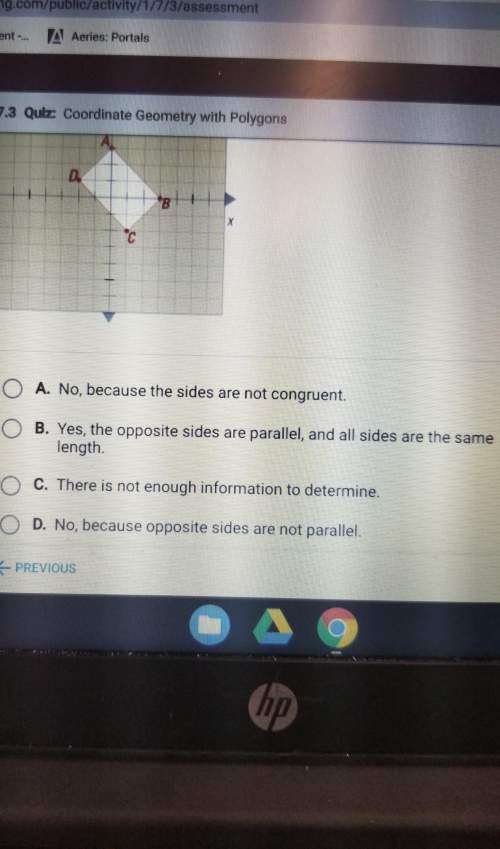
Mathematics, 14.02.2020 22:46 Lydiaxqueen
In rolling two dice, event X is defined as the outcomes {8, 11}; event Y is defined as the outcomes {2, 9, 4}; and event Z is the set of outcomes whose sum is odd. The probability of rolling a sum of 8 on two dice is 5/36; the probability of rolling an 11 is 2/36; the probability of rolling a 2 is 1/36; the probability of rolling a 9 is 4/36; the probability of rolling a 4 is 3/36; and the probability of rolling an odd number is one-half. What is the probability that neither X nor Y will occur?

Answers: 2


Another question on Mathematics

Mathematics, 21.06.2019 17:00
Imogene invested $8,000 in a bank account that pays 8 percent simple interest at the end of each year. her friend invested the same amount in stocks where the growth of the investment is represented as 2,000 times the square root of 2 less than the time lapsed in years. if y1 and y2 represent the amount earned in dollars and t is the time lapsed in years, which system of equations correctly represents the situation?
Answers: 1


Mathematics, 21.06.2019 20:30
Create a question with this scenario you could ask that could be answered only by graphing or using logarithm. david estimated he had about 20 fish in his pond. a year later, there were about 1.5 times as many fish. the year after that, the number of fish increased by a factor of 1.5 again. the number of fish is modeled by f(x)=20(1.5)^x.
Answers: 1

Mathematics, 21.06.2019 22:30
Factor the polynomial by its greatest common monomial factor.
Answers: 1
You know the right answer?
In rolling two dice, event X is defined as the outcomes {8, 11}; event Y is defined as the outcomes...
Questions


Computers and Technology, 14.02.2020 22:58

Chemistry, 14.02.2020 22:58






History, 14.02.2020 22:58




History, 14.02.2020 23:06

Physics, 14.02.2020 23:06





Computers and Technology, 14.02.2020 23:06






